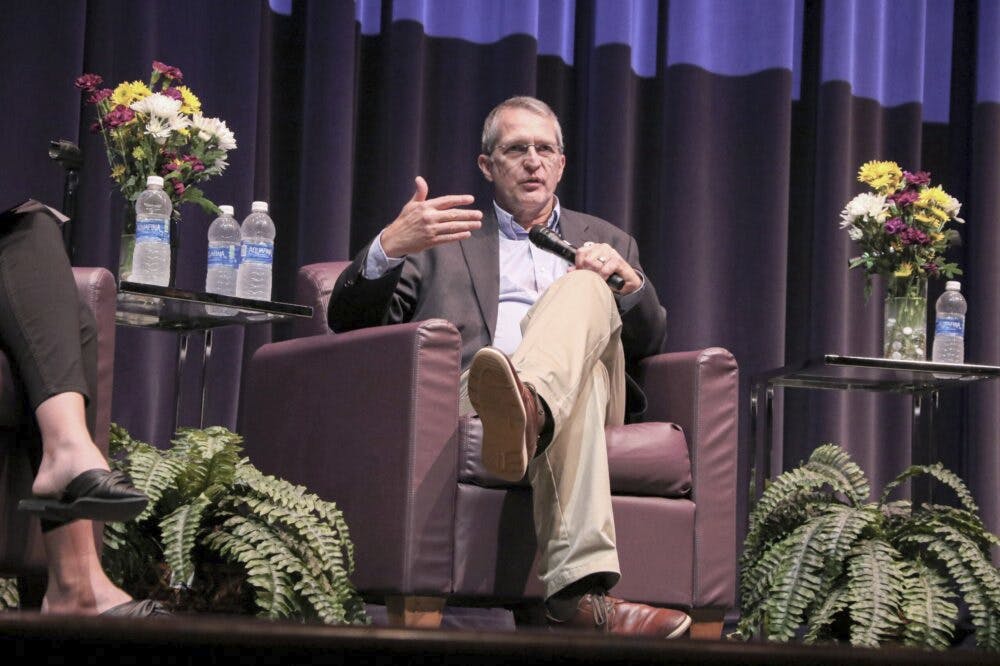VA Addresses America’s Health Care Disparities Through Tech
The agency is working with academia and private sector partners to close the care gap between underserved populations.

The Department of Veterans Affairs is looking to close nationwide gaps in health care provision, including across race and gender as well as throughout rural areas with currently limited technological access.
Speaking at the Veterans Health Administration iEX forum, private sector partners spoke with VA leadership on critical areas of health care disparity — like access and economic hardship — as well as methods to address them.
The challenges of the COVID-19 pandemic have served to highlight various gaps in American medical access, with the disparities in care and patient outcomes present across nearly all nationwide health systems.
In a discussion with VA Office of Health Equity Executive Director Ernest Moy, representatives from some of the agency’s closest partners in academia and the private sector outlined major concern areas in care access. Moy noted that the demands of the pandemic have only highlighted the impact that care gaps can have on separate populations, particularly during a public health crisis of COVID-19’s scope. This has also led VA to further leverage its health care modernization program to address these needs.
“The current pandemic has caused a lot of disruption in our entire health care system, but it’s also made us rethink our approach toward health and health care in a lot of new ways. This creates new opportunities for doing new things to advance health care equity,” Moy said at the event.
VA seems to be attuned to healthcare disparities caused by a variety of factors, and is looking to approach these as potentially overlapping or mutually compounding issues rather than addressing them in isolation.
“Most people are often used to looking at equity through just race or gender. But everything from socioeconomics to the local environment also has an impact on that. So how do we address health equity for specific populations because each individual is really at the intersection of multiple of these verticals?” said Freddy Nguyen, research fellow at the Massachusetts Institute of Technology, at the event.
The agency is aligning its modernization efforts while addressing health care disparities, like using telehealth to provide easier access to mental health services to populations that might have difficulty accessing them in person or be otherwise hesitant to visit an office in person.
“All innovation should be seen through an equity lens, and we need some innovations to tackle inequitable outcomes. There are some specific areas, and one I would certainly point out is mental and behavioral health because of the issues of historical stigma on top of other factors that contribute to inequity and racism — structural racism, bias, social determinants — there’s also the added stigma that is inherently attached to mental behavioral health. So that’s one area where I think innovation could really help,” said Lisa Simpson, president and CEO of AcademyHealth.
Another area of health equity VA is addressing is how to reach out to and prioritize the provision of care to veterans who might be particularly at risk amidst the pandemic, yet hesitant to seek care due to resulting economic hardship.
“It can be hard for the folks impacted by the pandemic that are experiencing social, economic or environmental challenges to access the care they need and the understanding they need. So we created our COVID-19 Vulnerability Index, an AI-enabled predictive model that helps prioritize care management and outreach to patients most at risk from the virus, and then identifying more socially isolated people without a support system so our care teams can offer assistance,” said Jay Bhatt, medical director at Medical Home Network.
VA and its partners are also looking to address the human aspects of care outreach, including ensuring caregivers and community outreach partners are drawn from the very same communities they serve and more intimately familiar with their particular health care needs.
“The veteran population is increasingly diverse. … It’s important not just to put veterans out there; It’s important to put representatives who will look like the folks, who know the folks, who’ve lived with the folks. It’s not a homogeneous veteran population,” said Steven Scwhab, CEO of the Elizabeth Dole Foundation.
This is a carousel with manually rotating slides. Use Next and Previous buttons to navigate or jump to a slide with the slide dots
-

VHA’s AI Chief Led NIH’s New AI RFI
The agency's AI chief Gil Alterovitz helped develop a plan that hints at how NIH is charting the future of AI and biomedical research.
5m read -

Trump Taps Maj. Gen. John Bartrum to Lead VHA
Nominated for VA's top health role, Bartrum brings over four decades of military and public service to the agency.
3m read -

VA Secretary Tells Congress Tech Efficiencies Will Help Offset Workforce Reductions
Technology improvements will help allow department to maintain veteran care, VA leadership tells Senate Veterans Affairs Committee.
-

Data Modernization for Federal Health Enterprise
Technology and modernized data systems are opening up new frontiers for health care clinicians, agencies and patients.
37m watch








